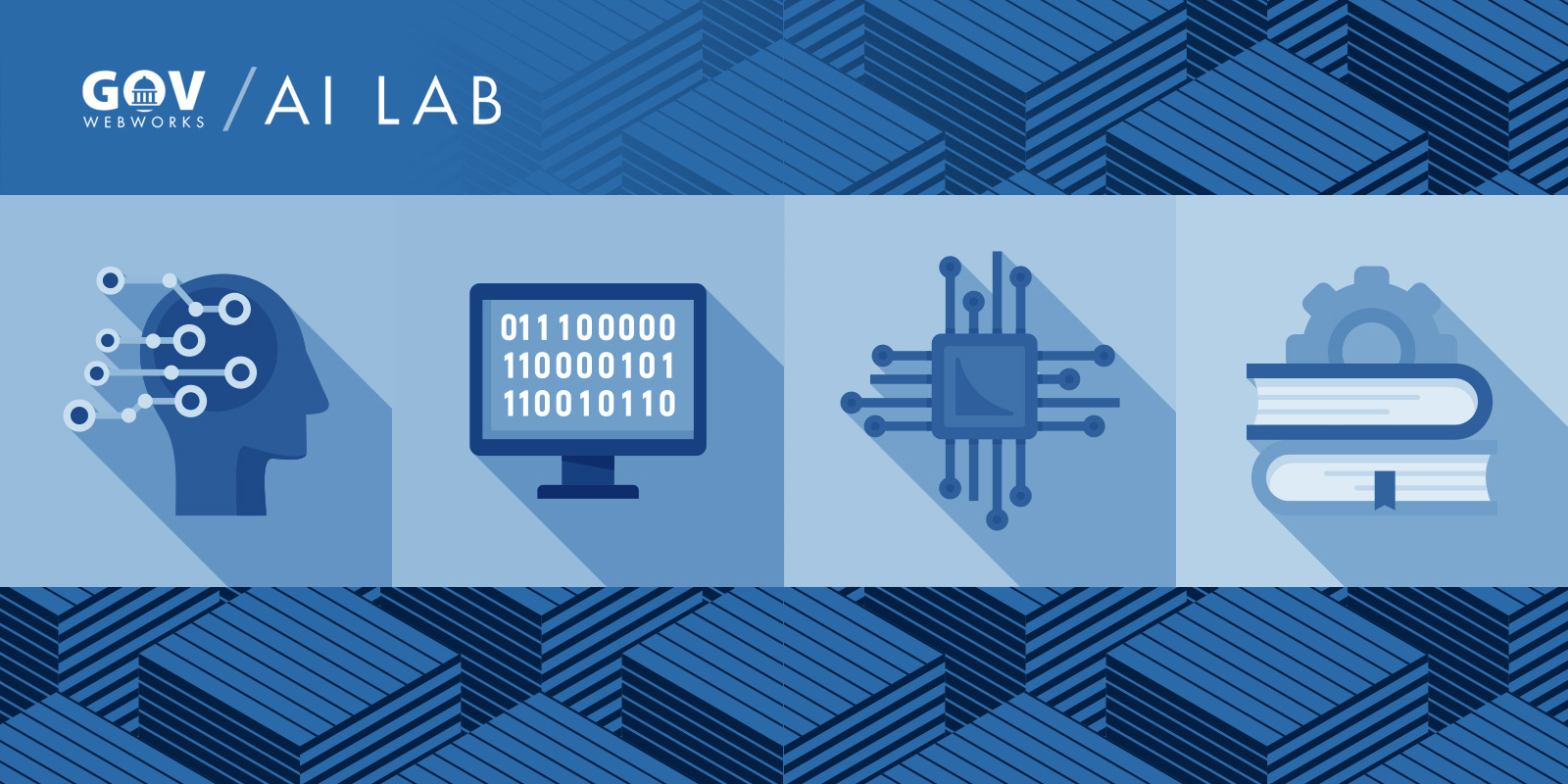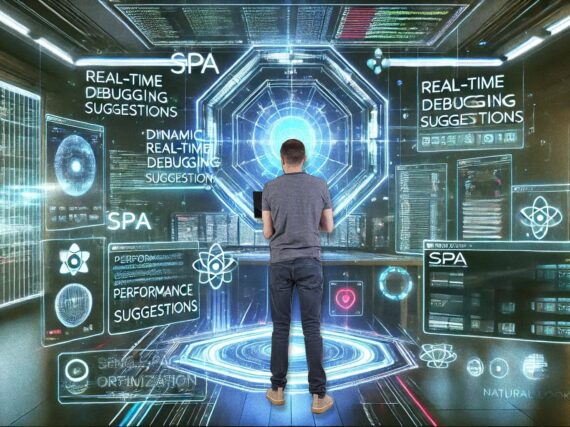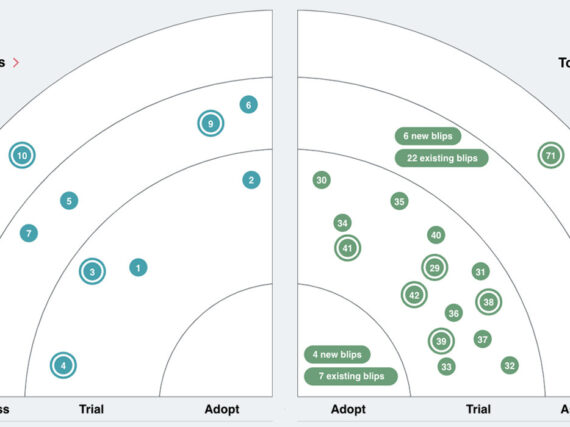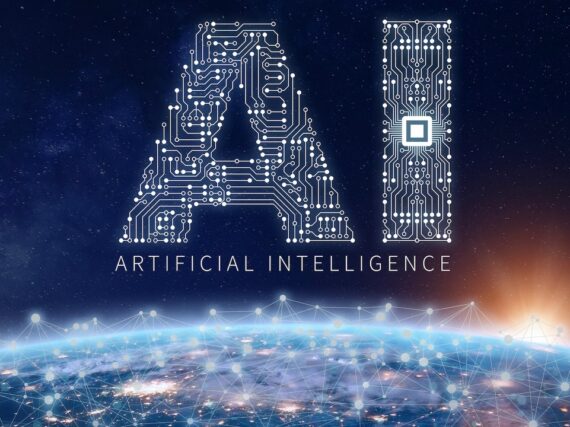Artificial intelligence (AI) is quickly becoming an integral part of government software development strategies and initiatives, reshaping the way products are created, delivered, and used.
In the current decade, we are seeing AI and machine learning woven into the fabric of the software and tools we use every day, often without even realizing it is there. These technologies aren’t just disrupting how we create, engage, and interact with data and information, they are transforming the entire pipeline, enabling new processes and efficiencies, as well as categories of products that never existed before.
To stay current with these technologies, we recently launched the GovWebworks AI Lab to help government agencies prototype, test, and implement AI and machine learning (ML) to augment their products and services.
Our goal is to help clients leverage these technologies to solve problems and pain points, improve efficiency, reduce costs, and provide better services to audiences.
Benefits of AI for the public sector
A new breed of software and websites are emerging with AI/ML baked right in, resulting in improved findability of content, higher user engagement, increased relevance of content, and stronger user satisfaction. Examples of these technologies include:
- Natural Language interfaces embedded into search and integrated chatbots.
- Decision Making tools such as data forecasting, recommendations, and relevance engines.
- Machine Vision tools that provide semantic text extraction from documents, and image recognition.
The GWW AI Lab is assessing the pros and cons of various services and tools so we can guide clients to the best solutions to fit their problem domains. Some benefits include:
Increase efficiency
AI can help government workers perform their jobs faster and with better accuracy. Many of the processes and tasks that deliver value to stakeholders can be semi or fully automated by AI, enabling government agencies to scale their operations and services more efficiently, with fewer resources, and at lower cost. By automating simple tasks that government staff would normally have to do, they can be freed up for oversight and more important tasks. Examples might be using machine vision to analyze images and recommend alt tags for accessibility, as well as tagging media for SEO and search, extracting usable content from PDFs, and using chatbots to handle repetitive questions that would normally require a human to answer.
Reduce friction
The tools and software we use in everyday life are filled with little bits of friction that add up to, at best, inconvenience, and at worst, a frustrating experience. AI can help reduce friction – the friction of creating content easily and communicating with audiences, and the friction of finding content.
Integrating AI into government products
Easy-to-implement AI platforms, services, and toolkits are quickly evolving and many can be integrated into existing infrastructures, software solutions, and websites with low effort and cost, providing quick, out-of-the box improvements to existing infrastructure and processes.
We are currently integrating AI into GovWebworks products and platform solutions. Elemental, our AI augmented Drupal distribution for government, incorporates some of these enhancements, with more to come. Some of our initiatives in this area include:
Chatbots
The Missouri Department of Conservation was looking to explore the use of chatbots to help users find information on their site and reduce repetitive support calls. A chatbot was prototyped allowing users to find information on hunting, season dates, methods, and other species-related information.
Additionally, we recently partnered with the Minnesota Department of Employment and Economic Development (DEED) to develop a chatbot prototype that will help people who have been laid off find out if they are eligible for additional benefits.
Automated media labeling
On many of our Drupal CMS projects, content creators manage uploading numerous images and files. Our custom tagging system uses AI/ML to automatically provide a list of possible tags for images. AI augmented tools like this can help staff create more useful content for audiences, provide better adherence to accessibility requirements with automatic image ALT tag recommendations, and provide new ways of finding content for users. As media becomes enriched with additional, higher quality metadata, new opportunities to search and find media become available.
Semantic text extraction
Making the thousands of files and documents on government websites findable in search results can require significant effort by staff. For the South Carolina Revenue and Fiscal Affairs Office, we’re using AI to automatically extract semantic content out of their Legislative Impact Statements to pre-populate discrete data fields in their CMS. This saves staff time, and more importantly, allows audiences to more easily find and filter the documents — in other words, reducing friction.
Natural language-based FAQs
A simple form of chatbot, these conversational interfaces provide a new way for audiences to interact with FAQ type pages and knowledge-bases using natural language. These tools allow content creators and government agency staff to quickly create and deploy these solutions using “no-code” tools. Using Elemental, our Drupal distribution, for example, multiple FAQ assistants can be created by our clients on-the-fly using an intuitive user interface and added to different sections of their website. These can augment call centers, support staff, and make it easier for users to help themselves.
Focusing on human-centered, ethical AI
At the AI Lab, we use AI to solve problems faced by government workers and staff, consumers of government content, and other audiences that interact with government agencies. We start by identifying a real-world problem experienced by a human user of a system and then review possible AI/ML technologies that might augment or replace a more traditional software solution to the problem
Government agencies are under intense scrutiny to provide fair, unbiased, inclusive services. While identifying these solutions, we also explore any ethical implications, for example unintended algorithmic bias in a recommendation engine based on the types and makeup of the data feeding it. At the AI Lab, we are exploring the use of tools that can help identify underrepresented groups in training data.
And most importantly, AI should help provide great user experiences – for both end-users and administrators. Our AI Lab and UX Department work closely together to ensure that interactions with the technology meet the same usability and accessibility requirements as any other web or software project.
Empowering content creators
We believe AI tools are the future of content management for government. At the AI Lab we are exploring how AI and ML can better empower content creators by making recommendations on design, layout, imagery, icons and even wording, enabling content creators to communicate with audiences quicker and more effectively.
For example, AI can help recommend which components to use to highlight content on a page, and to help build pages on the fly based on relevance, recommendation, and personalization engines. AI can also help automatically organize and present the most effective content strategies for audiences to reach the content they want, based on user feedback mechanisms (“did you find what you were looking for?”), analytics, and other data sources.
In summary
As noted, the GWW AI Lab is already working closely with our public sector clients to provide guidance, ideas, and inspiration. Our team enjoys any opportunity to apply these technologies to solve the problems and challenges faced by government agencies and their audiences. We welcome you to join us.
Learn more
- Contact us at ai@govwebworks.com to discuss how AI/ML can deliver a better experience to your staff and audiences.
- Follow our blog for upcoming posts on:
- Why the government is turning to chatbots and AI and how to get a pilot started.
- Introducing Media Assistant, an AI powered tool for automated annotation and assisted finding for images and files.
- The benefits of Elemental, a content management platform for empowering government to better communicate with their audiences.







